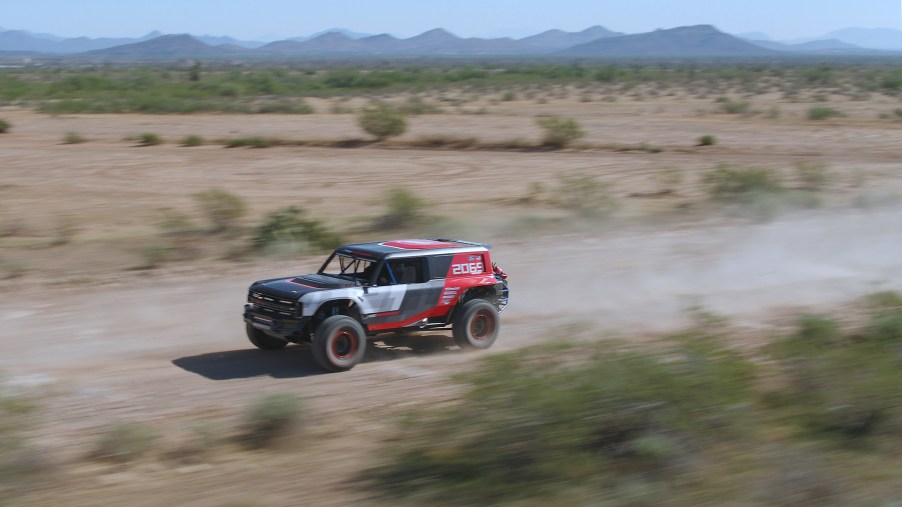
Mud Crashes Broken Parts Plagued Bronco R At Baja 1000
Sometimes the crazy circumstances of a racing loss are more interesting than the winning. That’s the case with the Ford Bronco R entry in the 2019 Baja 1000 desert race last month. Of the two entries from Ford one never finished and the other crossed the finish line minutes before the cutoff time for the race. There were 145 finishers in all. What the heck happened?
Ford made the decision to enter the 800-mile long Baja 1000 to celebrate the 50 year anniversary of it winning the same race in 1969 with a Bronco. It also was meant to spotlight the soon-to-debut all-new Bronco coming in 2020. This was a great idea but the time the principles had to deliver two competitive entries in the Class 2 category was tight.
Geiser Bros. had only five months to build the Bronco R
This was a skunkworks project started five months earlier in June. The shop of Geiser Bros. Design and Development was picked along with 2018 Baja 1000 winner Cameron Steele collaborating. Almost everything above the chassis was stock Ford, while below was custom-made to withstand the rigors the desert contains.

The Bronco R Prototype’s EcoBoost engine, paddle-shift automatic transmission, transfer case, and front differential were all factory stock. Specially-made components were the modified Ford T6 BOF frame, suspension with Fox shocks allowing 14-inches travel up front, and 18-inches in the rear, a five-link rear suspension, rear differential, exhaust, fuel cell, and 17-inch Beadlock wheels.
“Ford production parts performed flawlessly”
Ford has always emphasized the production Ford components held up to everything the desert presented. “The Ford production parts performed flawlessly,” says Ford Performance off-road racing supervisor Brian Novak who spoke with Trucks.com.
So, if those performed flawlessly, what didn’t? Electrical wiring, fuses, and the cooling system all caused continual problems throughout the race. They always say it’s the 10-cent part that can get you in a race.
There were four inches of rain in three days
Exacerbating things was the weather. Four inches of rain fell in three days, necessitating a delay of the start for 24 hours. The track needed to be cleared or in some cases rerouted. At this time of the year, there can be flash flooding, but that amount of rain is unusual in November. Needless to say, the dry desert dirt and sands found during practices were instantly turned to goo.

The first real problem occurred about half-way through the race when a Trophy Truck landed on top of the Bronco R as it tried to climb a wash wall. No injuries resulted, but it took time for equipment to get to the racers to separate them. Soon after transmission cooling lines were damaged when a skid plate got munched. The problem was the cooling line damage wasn’t discovered until the Bronco R was back on the course and the transmission started slipping.
Done for the year
Once in Pit #3 it took several hours to locate the problem and repair it. Then, under 200 miles later a lower control arm was damaged and needed to be replaced. At mile 580 the truck started overheating. The problem was the aftermarket cooling fan. By the time this was fixed it was dark and the most treacherous portion of the course awaited. It was decided not to take the risk of another failure and so the team was done.

As the mud was unanticipated it was determined later that the ride height was probably too low for the muddy conditions. Rock strikes were another problem. Also, the weight of all of the mud sticking to the truck added an extra load on the drivetrain and components. Over 500-pounds of mud was removed from the Boot.
Though almost 2,000 miles of testing was performed, Ford was obviously disappointed in the outcome. Ford says it will return next year, with better- fabricated components and backup for anything that might cause a failure.
We wouldn’t expect anything less.



